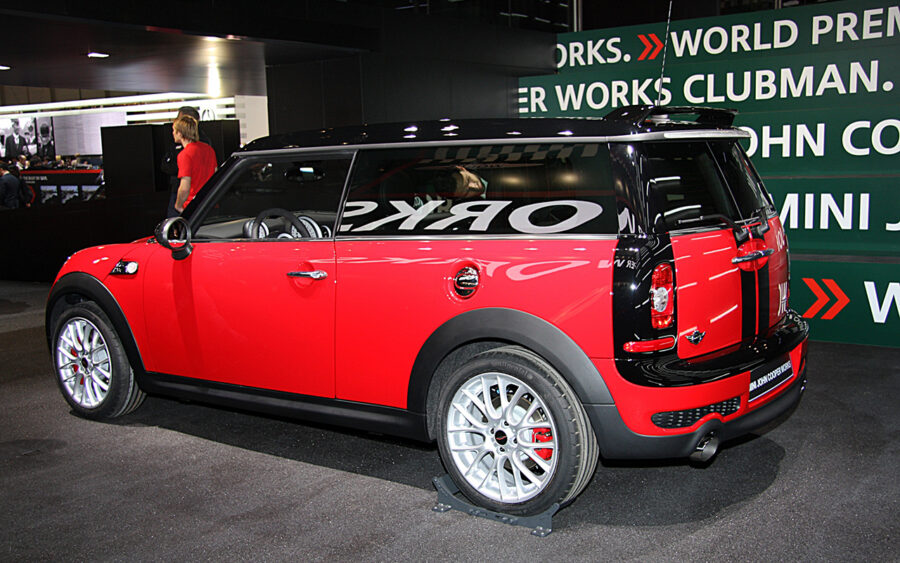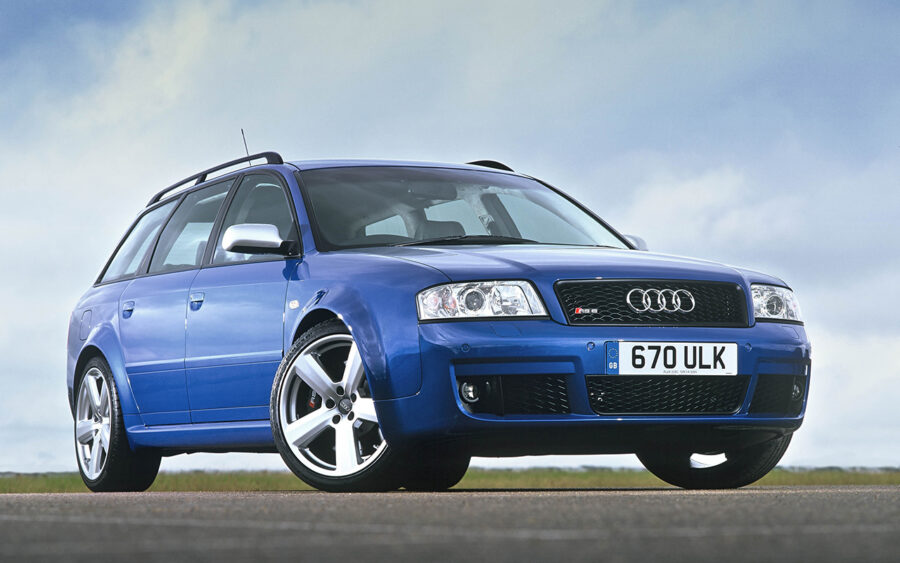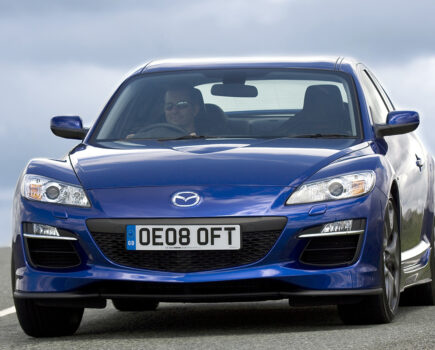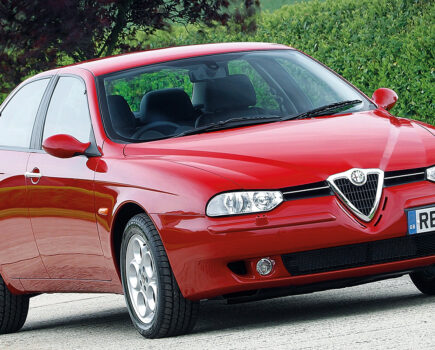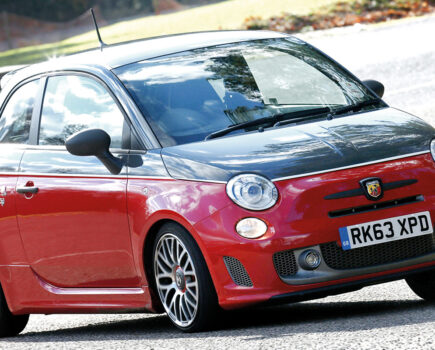Can’t stretch to the latest M3 Touring or RS6? Don’t worry – we’ve got some more affordable fast estate car alternatives
Words: Chris Randall
Audi RS6 Avant
If you prefer your fast estate car to carry the four rings then let us point you in the direction of the mighty RS6. Subtle it isn’t, especially the noise it makes, so if you want to shift stuff without drawing attention then it’s probably not for you, but if its extrovert nature appeals you won’t be disappointed.
Mind you, it’s a car to buy with head not heart as big bills await the unwary but bag a well-maintained one and you’ll love it. What makes it such a bruiser is the twin-turbocharged 4.2-litre V8 that pumps out 444bhp and 413lb.ft of torque, numbers that result in 0-62mph in under five seconds. The five-speed Tiptronic gearbox isn’t as sophisticated as today’s offerings but is effective enough, while the four-wheel drive system makes deploying all that punch an easy affair. The Avant was notably more popular than the saloon when this C5 generation of RS6 was new, and while there aren’t lots for sale the important thing is seeking out a cherished example.
Running costs are already on the high side and consumables such as brakes are pricey, and you certainly don’t want to see any hint of trouble with the engine or transmission. The other point to mention is the suspension; this was the first Audi to get the Dynamic Ride Control adaptive suspension and it proved leak prone. One answer was to replace the trick suspension with conventional coil-over units, so don’t be surprised if the car you’re considering has had this done. As for prices, £15,000 is a realistic starting point for a good example.
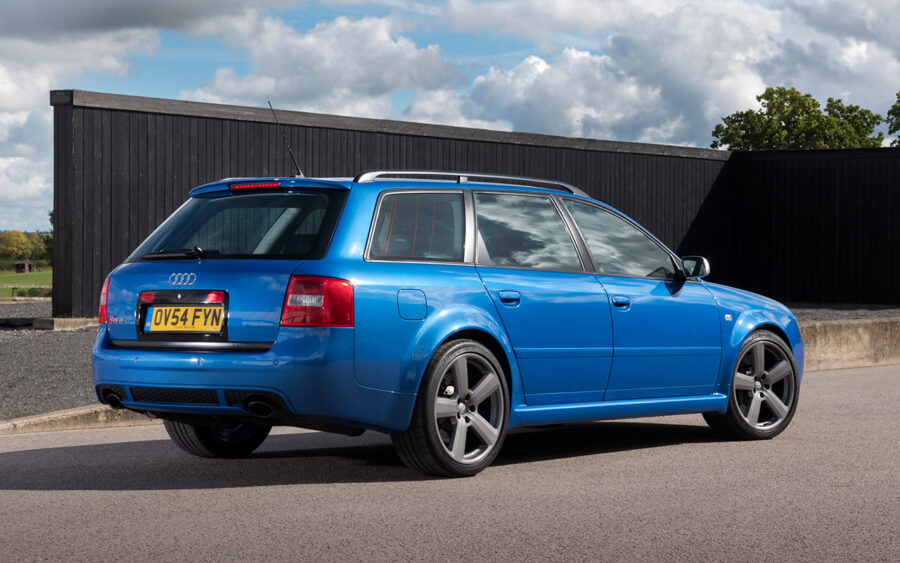
Volkswagen Passat R36
A Passat estate is pretty much the definition of family car sensibleness, but there was a way to experience a bit more excitement on that run to the tip. Arriving in 2008 and on sale for just two years, the R36 swapped the usual humdrum power units for a 3.6-litre V6 that produced a rather more enticing 296bhp – and a very fast estate car.
Driving all four wheels via manual or DSG automatic gearboxes the result was 0-62mph in under six seconds and a top speed of 155mph. If you had stuff to shift this was more like it, and with more than 1600 litres of luggage space on offer when you dropped the back seats there was no shortage of practicality.
And the hot load-lugger looked the part, too, gaining the likes of bi-xenon headlights, blue brake calipers and a plusher interior. Buyers needed to part with almost £31k, and while the estate outsold the saloon variant by around two-to-one that price might explain why it’s something of a rarity today.
You’re not exactly spoiled for choice in the classifieds then, so expect to pay at least £12,000 if you find one, but persevere and you’ll be rewarded with a very satisfying ownership proposition. A reliable one in the main, too, although it’s worth a thorough check for any signs of misbehaviour from the DSG transmission or rattles from the timing chain; both can result in pricey repairs. And ensure that the fairly hefty kerb weight hasn’t taken its toll on brakes and tyres.
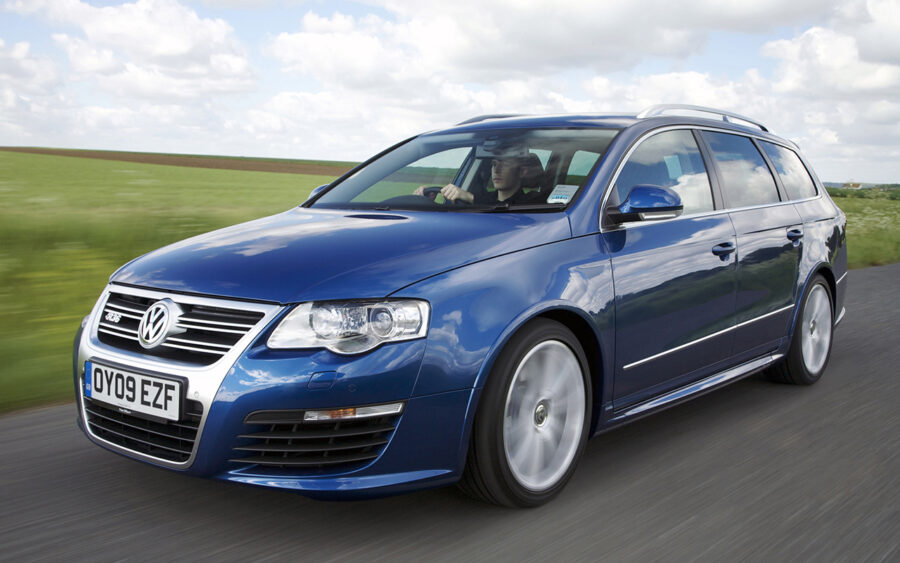
Mercedes-Benz C63 AMG
It’s the W204 generation of C-Class that we’re interested in here, and more specifically the most bonkers version of the whole range. Classy and with top-notch build quality, the estate was always a fine choice but the addition of a bellowing 6.2-litre V8 turned it into a very fast estate car.
The M156 unit really did sound the part, and with 457bhp and 442lb/ft of torque there was no shortage of pace; 0-62mph was despatched in 4.6 seconds while the 155mph top speed could be raised to 174mph by ticking the box marked ‘Performance Pack’ which also got you a limited-slip differential.
Drive was through a 7G-tronic transmission that snapped crisply through its ratios to deliver seemingly endless thrust, and the driver could select from Comfort, Sport and Manual modes depending on mood. Original buyers had to fork out more than £50k, making today’s prices something of a bargain by comparison, although you will have to contend with fuel consumption that can dip into the mid-teens without much provocation.
Still, we reckon such wallet-wilting fuel bills are probably worth it for the soundtrack alone. Assuming such profligacy hasn’t put you off the crucial thing is finding an example with an unimpeachable service history. Any doubts about the health of that V8 or signs that a previous owner has skimped on maintenance should have you walking away. But find a good one, and it’ll prove a glorious way to shift people and luggage.
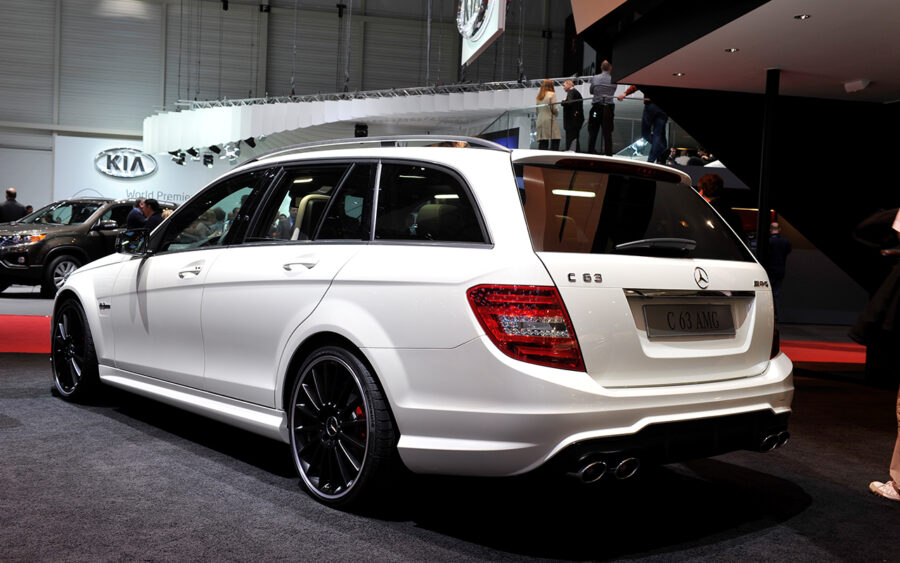
Volvo V70 R
Volvos are safe, sensible and, if the clichés are to be believed, perfect for antique dealers. But the V70 R is the Swedish car maker showing its wilder side, and with prices starting from around £7000 (there’s not a huge choice and £10k gets a one-owner car with lowish miles) it’s a very tempting fast estate car. Yes, its safety credentials aren’t in doubt and there’s certainly masses of practicality and space – a maximum of 1641 litres, in fact – but we’re rather more interested in the way it performs.
The second generation of V70 arrived in 2000 with styling by Peter Horbury that was notably smoother than its square-cut predecessor, and in 2003 the range was joined by the V70 R. It was a mouth-watering confection that combined a turbocharged 5-cylinder motor making 300bhp with a Haldex-based four-wheel drive system, uprated suspension and bigger brakes. There was a choice of six-speed manual or five-speed automatic gearboxes while the Four-C chassis technology offered a choice of drive modes ranging from Comfort to Advanced Sport.
As for outright performance, 0-62mph could be ticked off in less than six seconds so it was more than quick enough to entertain, but what really boosted the appeal was that this pace was combined with understated looks and a supremely comfortable and well-equipped cabin. This is a load carrier that makes just as much sense today as it did almost two decades ago, and one with a blend of abilities that’s very hard to resist.

Saab 9-5 Aero
We’ve already highlighted Volvo’s rapid estate offering, but from the other major Swedish car maker came this. The 9-5 was launched in 1997 and remained in production until 2010, with the Aero variant arriving in 2000.
Fitted with the B235R ‘High Output Turbo’ engine, the 2.3-litre unit produced nigh-on 250bhp (256bhp from 2006) although unlike the Volvo drive went to the front wheels only. The 9-5 saw a return for the centre console-mounted ignition but such quirks aside the rest of the package was as safe and comfortable as you’d expect from Saab, and the overall ergonomics were superb.
It also boasted 890 litres of load bay space, and although not the biggest the luggage area it was well-shaped and featured a sliding boot floor to help with loading. As for performance, it’s still a fast estate car today and although not as wild as some of the other offerings here, you’re unlikely to feel short-changed.
Early examples are getting on a bit and while Saabs have a well-deserved reputation for longevity, you’ll still need to give any example a thorough check-over before parting with any cash. Lack of servicing, a tired interior and electrical niggles are the main things to watch for.
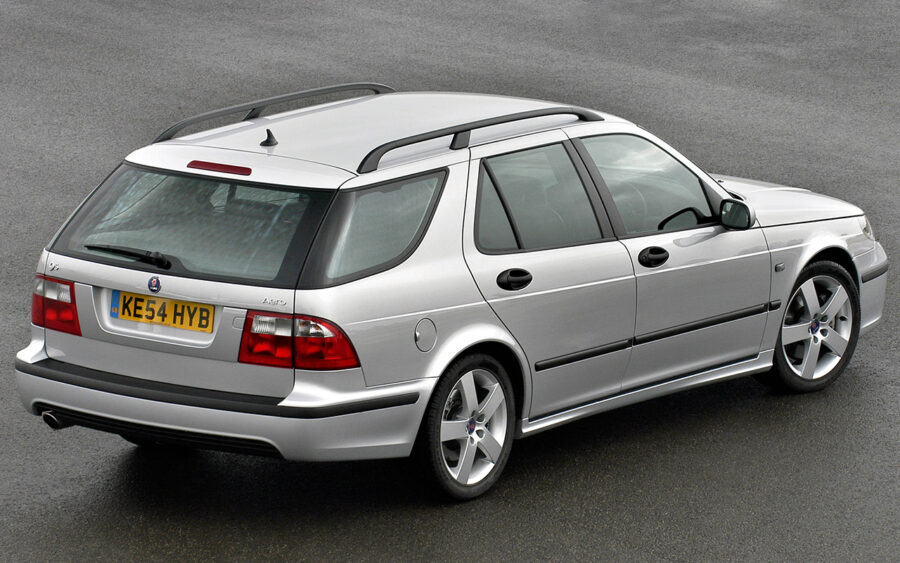
Skoda Octavia vRS
The second-generation Octavia vRS has become a very affordable fast estate car. So with prices from £2000–2500 it was a no-brainer to include it here, not least because that affordability makes it more appealing than ever.
This hotter version appeared in 2005 – a year after the rest of the range – and was powered by the 197bhp 2.0-litre TFSI engine shared with the Golf GTI, resulting in 0-60mph in 7.3 seconds and a 145mph maximum. Refined and punchy, it endowed the spacious and practical estate with proper sporting appeal, but there was an alternative.
For those of a more parsimonious nature the vRS was also available with a 168bhp diesel engine that claimed official economy of nearly 50mpg. Either way, you got a car that blended subtle looks – a mild bodykit and 17-inch alloys were the main giveaways – with a good quality cabin and plenty of kit.
Developed throughout its lifespan, a facelift in 2009 saw the adoption of the 2.0-litre TSI petrol engine from the Mk 6 Golf, although power remained the same. This change makes a difference to maintenance as it featured a timing chain rather than the belt of the TFSI; this latter needs replacing at 80,000 miles, so check the service history of a potential purchase to ensure this was done.
And if the first buyer specified the DSG automatic gearbox you’ll want to see evidence that it’s been serviced every 40,000 miles. Those things aside there’s not much else to worry about so just concentrate on finding the tidiest and cared for example you can. £8000 gets you the best but at that point you’re knocking on the door of the third-generation car.
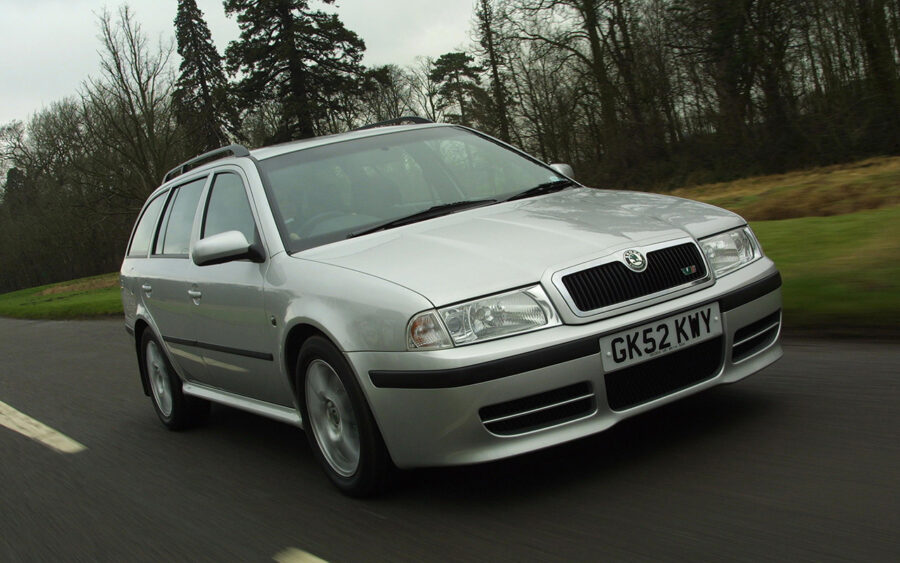
Alfa Romeo 159 Sportwagon
The 156 was a real styling renaissance for Alfa, but the model we’ve chosen is its successor that was launched at the 2005 Geneva Motor Show. The Sportwagon arrived a year later, and thanks to the styling efforts of Giorgetto Giugiaro and Alfa’s own Centro Stile the 159 was a fine-looking thing. In terms of load carrying duties it’s not the biggest compared to some of our other choices, but it wasn’t far short of contemporaries such as the BMW 3 Series Touring so it should be useful enough for most needs.
But we’re interested in performance here, and for that you’d want to look to the 3.2-litre V6 model that boasted 260bhp and a 0-60mph dash completed in 7.0 seconds. There was all-wheel drive traction, too. The difficulty might be finding one to buy, so an alternative is to take the diesel route with the 2.4-litre JTDM engine that made a none-too-shabby 200bhp; with 0-60mph in around 8.0 seconds and 40mpg potential it’s a tempting combination, especially at around £3000 for a 2007 100k-miler.
And if you can bag your Sportwagon in top-spec Lusso trim so much the better; you’ll benefit from full leather and plenty of other goodies. The 159 is certainly entertaining to drive and there’s nothing too major to worry about in terms of reliability; avoiding shabby, poorly-maintained examples and ensuring everything works is the important thing, although keep an eye out for front sub-frame corrosion and EGR issues on the diesel. There’s plenty of Alfa specialists on hand to keep your 159 in fine fettle, though.
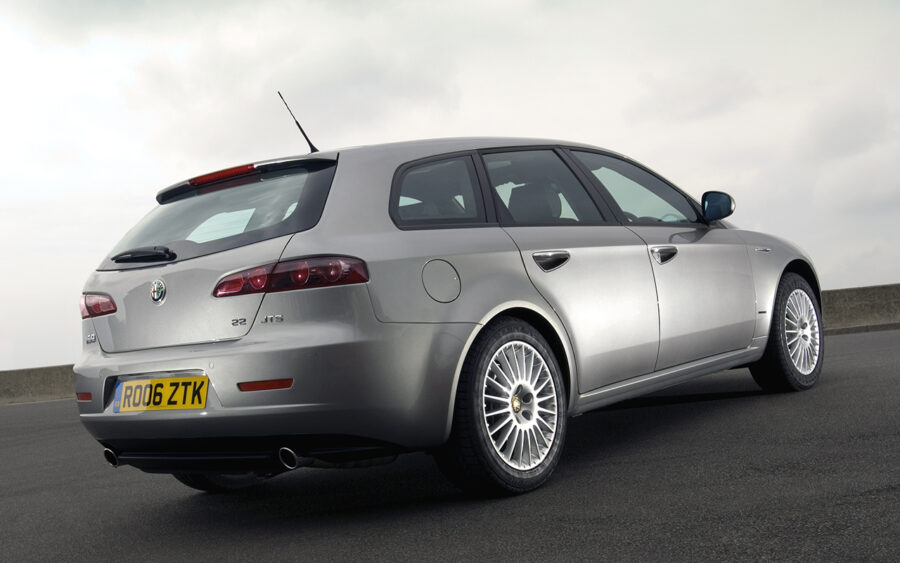
Ford Mondeo ST220
With the Mondeo having disappeared after almost three decades now seems the perfect time to remind ourselves of this punchy estate model. It’s the Mk3 we’ve got here, going on sale in 2001 and lasting until 2007, and with Ford having moved this generation on from the New Edge styling of its predecessor the result was a larger, sharper-looking family motor.
And it certainly looked good in ST220 form thanks to the flared wheelarches, body kit and 18-inch spoked alloys. It went well, too, courtesy of a 3-litre V6 Duratec motor making 226bhp; enough to shove the spacious estate to 62mph in 7.4 seconds and on to 155mph. Early cars got a five-speed manual transmission which was swapped in 2003 for a Getrag six-speeder, and it’s one of those we’d go for.
As for the rest of the package, it was a typically rounded effort from Ford that resulted in a car that was great to drive, and benefitted from a cavernous load bay that makes it a very practical choice. The comfortable interior is the icing on the cake, with the cabin of the ST220 perked-up by heated leather Recaro seats. As for buying one, it’s a matter of avoiding anything shabby and unloved, or with ill-advised modifications, and checking for corrosion and electrical niggles. Avoid those pitfalls and it’s a very satisfying drive, although finding one may be the hardest thing and you’re looking at around £4000 for something nice.

MINI Clubman JCW
You won’t need us to remind you how successful the ‘new’ MINI has been since its launch way back in 2001. The fun driving experience has seen it become a proper modern classic, and the one we’re interested in is the somewhat quirky Clubman estate that arrived in 2007.
The R55 model in BMW-speak, it’s fair to say that not everyone was a fan of the looks, nor the somewhat unusual approach of having just one rear door mounted on the driver’s side. Still, interior space was boosted by an additional 80mm in the wheelbase compared to the hatchback and luggage space ranged from 260 to 930 litres. If that’s enough for your needs let’s talk performance, and for that you’ll want the JCW model.
Under the bonnet is a firecracker of an engine, a turbocharged 1.6-litre unit sending 208bhp to the front wheels via a six-speed manual gearbox. The result was 0-62mph in 6.8 seconds and a 148mph maximum which, combined with the sharp, pointy handling made for a truly fun package. And prices? Budget £9000 for a sound one with less than 100,000 miles.
